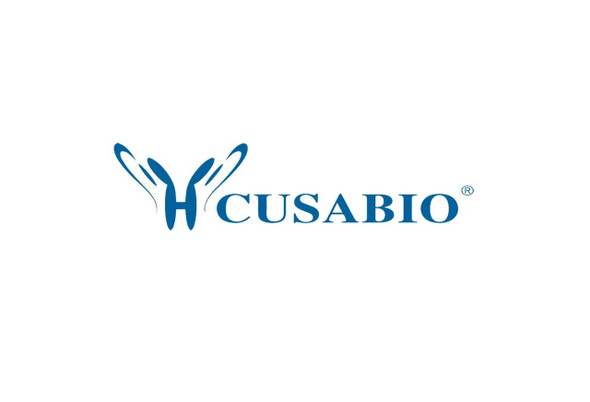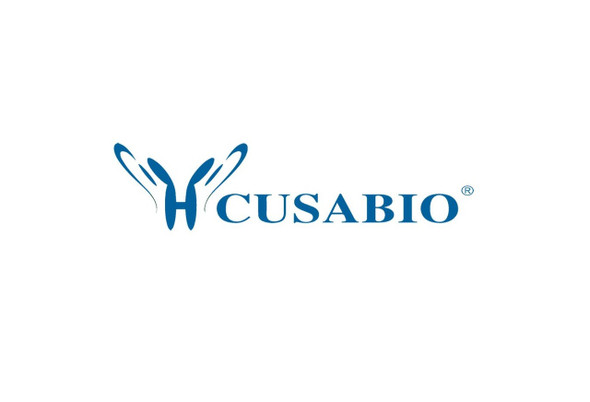Cusabio Mus musculus Recombinants
Recombinant Mouse Acyl-CoA desaturase 1 (Scd1), partial | CSB-EP319560MO1
- SKU:
- CSB-EP319560MO1
- Availability:
- 3 - 7 Working Days
Description
Recombinant Mouse Acyl-CoA desaturase 1 (Scd1), partial | CSB-EP319560MO1 | Cusabio
Alternative Name(s): Delta(9)-desaturase 1 (Delta-9 desaturase 1) (Fatty acid desaturase 1) (Stearoyl-CoA desaturase 1)
Gene Names: Scd1
Research Areas: Cancer
Organism: Mus musculus(Mouse)
AA Sequence: VNSAAHLYGYRPYDKNIQSRENILVSLGAVGEGFHNYHHTFPFDYSASEYRWHINFTTFFIDCMAALGLAYDRKKVSKATVLARIKRTGDGSHKSS
Source: E.coli
Tag Info: N-terminal 10xHis-tagged and C-terminal Myc-tagged
Expression Region: 260-355aa
Sequence Info: Partial
MW: 18.4 kDa
Purity: Greater than 85% as determined by SDS-PAGE.
Relevance: Stearyl-CoA desaturase that utilizes O2 and electrons from reduced cytochrome b5 to introduce the first double bond into saturated fatty acyl-CoA substrates. Catalyzes the insertion of a cis double bond at the Delta-9 position into fatty acyl-CoA substrates including palmitoyl-CoA and stearoyl-CoA. Gives rise to a mixture of 16:1 and 18:1 unsaturated fatty acids. Plays an important role in lipid biosynthesis . Plays an important role in regulating the expression of genes that are involved in lipogenesis and in regulating mitochondrial fatty acid oxidation. Plays an important role in body energy homeostasis. Contributes to the biosynthesis of membrane phospholipids, cholesterol esters and triglycerides. Required for normal development of sebaceous glands. Required for the biosynthesis of normal levels of Delta-9 unsaturated fatty acids and 1-alkyl-2,3-diacylglycerol in the Harderian gland. Required for normal production of meibum, an oily material that prevents drying of the cornea.
Reference: "Scd1 is expressed in sebaceous glands and is disrupted in the asebia mouse." Zheng Y., Eilertsen K.J., Ge L., Zhang L., Sundberg J.P., Prouty S.M., Stenn K.S., Parimoo S. Nat. Genet. 23:268-270(1999)
Storage: The shelf life is related to many factors, storage state, buffer ingredients, storage temperature and the stability of the protein itself. Generally, the shelf life of liquid form is 6 months at -20?/-80?. The shelf life of lyophilized form is 12 months at -20?/-80?.
Notes: Repeated freezing and thawing is not recommended. Store working aliquots at 4? for up to one week.
Function:
Involvement in disease:
Subcellular Location:
Protein Families:
Tissue Specificity:
Paythway:
Form: Liquid or Lyophilized powder
Buffer: If the delivery form is liquid, the default storage buffer is Tris/PBS-based buffer, 5%-50% glycerol. If the delivery form is lyophilized powder, the buffer before lyophilization is Tris/PBS-based buffer, 6% Trehalose, pH 8.0.
Reconstitution: We recommend that this vial be briefly centrifuged prior to opening to bring the contents to the bottom. Please reconstitute protein in deionized sterile water to a concentration of 0.1-1.0 mg/mL.We recommend to add 5-50% of glycerol (final concentration) and aliquot for long-term storage at -20?/-80?. Our default final concentration of glycerol is 50%. Customers could use it as reference.
Uniprot ID: P13516
HGNC Database Link: N/A
UniGene Database Link: N/A
KEGG Database Link: N/A
STRING Database Link: N/A
OMIM Database Link: N/A






